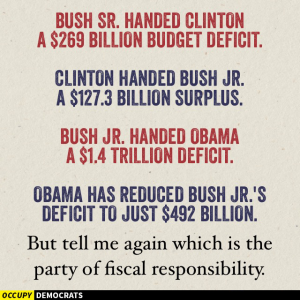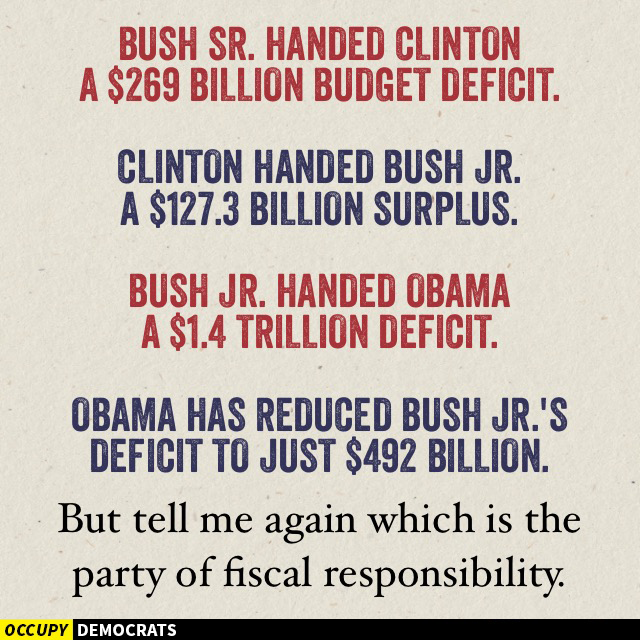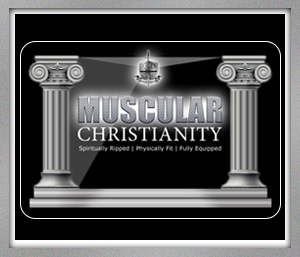Muscular Politics
 Not too long ago, I made it a goal to read a book about every personality featured on US Currency. Starting with Washington, here’s what I’ve been able to accomplish thus far (updated January 27, 2018):
Not too long ago, I made it a goal to read a book about every personality featured on US Currency. Starting with Washington, here’s what I’ve been able to accomplish thus far (updated January 27, 2018):
George Washington ($1 dollar bill): “His Excellency: George Washington”
Thomas Jefferson ($2 dollar bill): “Thomas Jefferson: The Art of Power”
Abraham Lincoln ($5 dollar bill): “Team of Rivals: The Political Genius of Abraham Lincoln”
Alexander Hamilton ($10 dollar bill): “A Fatal Friendship”
Andrew Jackson ($20.00 bill): “Andrew Jackson: American Lion”
Ulysses S. Grant ($50 dollar bill): “Ulysses S. Grant: Soldier and President”
Benjamin Franklin ($100 dollar bill): “Benjamin Franklin: An American Life”
William McKinley ($500 dollar bill): “The American Presidents Series: The 25th President, 1897-1901“
Grover Cleveland ($1,000 dollar bill): Grover Cleveland: A Study in Character
James Madison ($5,000 dollar bill): “James Madison: A Life Reconsidered”
Salmon P. Chase ($10,000.00 bill): Salmon P. Chase: A Biography
Woodrow Wilson ($100,000 dollar bill): “Wilson”
In addition, I’ve read several books by David McCullough who does a great job of making history come alive: “Truman,” “John Adams,” “1776,” and “Mornings on Horseback” which is an account of Theodore Roosevelt’s early life. And as a quick aside, Theodore Roosevelt is one of my favorite presidents for a number of reasons, not the least of which is his passion and energy when it came to championing his Christian convictions. By Edmund Morris, there’s “Theodore Rex,” “Colonel Roosevelt and “The Rise of Theodore Roosevelt.” There’s also a short book from George Grant called “Carry a Big Stick: The Uncommon Heroism of Theodore Roosevelt” which is excellent.
In the midst of reading these books, I’ve had my perspective on the theme of politics reinforced as far as the way in which your ideas sometimes need to be presented in order to secure the endorsement of your opponent. First off, it’s not always a sinister process. Jesus displayed a deft sensitivity to the people He interacted with and by so doing was able to transform the life of individuals who would’ve otherwise remained cynical and unchanged (see John 4). This is politics in its most noble iteration. It becomes a dark art, however, when the agenda is contrary to the public good and the tactics used to communicate the substance of the issue are intentionally misleading.
It’s not always easy to distinguish the good from the bad, however, which is why it’s important to be informed beyond a quick glance at the headlines. It’s not an especially laborious process as much as it’s a question of simply considering other resources in addition to those that tend to dominate the airwaves and the internet. Bear in mind, too, that while it’s not difficult, it both responsible and biblical to have an idea as to what’s going and what political school of thought is truly deserving of your support (see 1 Chron 12:32).
Take for example a recent assertion by “Occupy Democrats” where it’s stated that the Obama administration has been a far better steward of our nation’s financial resources then his predecessor. At first glance, the figures appear compelling and the vitriolic verbiage seems justified. But as is the case with most indictments such as these, there’s another side to the story which is conspicuously absent.
When President Obama took office, the National Debt was 10.6 trillion dollars. According to Forbes magazine, it is now over 18 trillion. That’s a 70% increase in debt and every bit of that has occurred during Obama’s watch.
There’s a difference between total National Debt and annual budget deficit. The annual budget deficit is the amount of money that is spent annually over and above revenue. The Obama camp goes out of their way to state that their policies have decreased the annual budget deficit dramatically, thus casting a shadow over the Bush administration and like minded Republicans whose figures are notably higher. But should you take a moment and look at what George W. Bush spent and how he spent it, you’ll notice there’s more to the story than what’s being told by Obama’s statistics.
In 2008, Bush’s spending was at 485 billion above and beyond what the country was bringing in in terms of revenue. Spending more than what you have is never healthy, but some of those expenses were incurred as a result of 9/11. Towards the end of 2008 it had gone up another 100 billion due to recession related aid and suppressed revenues. But then Bush enacted the Trouble Asset Relief Program (TARP) when the Fannie Mae and Freddie Mac crisis hit. The Federal National Mortgage Association and the Federal Home Loan Mortgage Corp were initiated in 1968 and 1970 respectively to aid in making home ownership more available. Over the years, however, an irresponsible accumulation of risk came to head leading to a financial crisis that George W. responded to with a 700 billion dollar loan. As of today, 500 billion of those monies have been paid back. But those in the Obama camp don’t consider that loan anything other than an expense, thus forcing Bush’s deficit spending to a hypothetical 1.3 trillion dollar amount.1
The fact is, the deficit Obama inherited from Bush from a purely practical standpoint was 800 billion, much of that spent in the context of responding to 9/11, and other such crises. It’s also significant to note that the tax cuts that Bush spearheaded, the military spending he put in place as we well as the TARP Relief Package were all voted for by Obama.2
Now, is Bush blameless? No. But neither are the last several Presidents going all the way back to FDR.3 The point here is that to suggest that George W’s administration constitutes an outrageous degree of fiscal irresponsibility and it’s his monetary sins that puts Obama’s financial record in a bad light, is to completely overlook the fact that Obama’s administration has contributed significantly to the National Debt. Moreover, unlike the TARP scenario where the spending was in response to a crisis with global implications and engineered as a loan, Obamacare was /is a piece of legislation thrust upon the American public despite many being passionately opposed to it.
Consider the differences between Obamacare and the TARP Relief Package. In 2010, the Democrats had a Supermajority thus making it unnecessary to secure a Republican vote in favor of the Affordable Health Care Act. That majority would come in handy, given the way in which this legislation compels all Americans to purchase health insurance – a dynamic that inspired some to question the bill’s Constitutionality.4 In addition, the fact that Obamacare requires all citizens to fund abortions and imposes penalties on those who do not purchase government funded healthcare further distinguishes Obamacare as an politically, liberal maneuver more so than a needful response to a crisis such as the TARP legislation that was a line of credit extended to an industry whose collapse stood to send lethal ripples throughout the national and international economic pool.
Obamacare is designed to make heathcare more affordable to more Americans by offering government subsidized policies and broadening the scope of Medicaid. The Congressional Budget Office estimated the cost of the Affordable Health Care Act to be slightly over 2 trillion dollars over the next decade. When considering the cost coupled with the lack of participation on the part of those who were apparently desperate for affordable health care – those two factors alone are enough to establish AHC more as an expenditure than an obligation. Combine those shadows with the lack of a sound Constitutional basis and an obligation to subsidize lifestyle choices that some consider immoral and you have a darkness that is thick and sinister.
Obamacare – An opportunity to further socialize the American Health Care system accomplished by a liberal supermajority that adds trillions of dollars to our National Debt…
TARP Relief Package – A problem that needed fixing responded to with a loan, most of which has been paid off…
No doubt you could debate government controlled healthcare for days, but the point being made here is that Obama’s resolve has added a considerable amount of debt to the national tally and to position him as being “financially responsible” is possible only if you dismiss the manner in which he supported the Bush policies he now conveniently criticizes and overlook the legislation he compelled the American people to accept at a cost that has yet to be completely assessed.
In short, it’s not necessarily prudent to conclude that President Obama has been a better steward of our nation’s finances that his predecessor. It’s certainly not a productive conversation if the only facts being considered are those that “Occupy Democrats” wants to imply as being a comprehensive snapshot of the situation.
And that’s the difference between uninformed convictions and Muscular Politics.
1. The Hill, “The True Deficits”, Dick Hill, February 2, 2010, http://thehill.com/opinion/columnists/dick-morris/79359-these-are-the-true-deficits-bush-800b-obama-14t, accessed August 13, 2015
2. American Thinker, “Why Blame Obama”, Randall Hoven, http://www.americanthinker.com/articles/2012/09/why_blame_obama.html, accessed August 16, 2015
3. Time Magazine, “Which President Accrued The Highest Budget Deficits?”, Natalie Morin, September 9, 2014, http://time.com/3306060/which-president-accrued-the-highest-budget-deficits/, accessed August 16, 2015
4. Conservapedia, “Obamacare”, http://www.conservapedia.com/ObamaCare, accessed August 20, 2015
More reading…
http://www.factcheck.org/2012/09/obamas-deficit-dodge/
http://thehill.com/opinion/columnists/dick-morris/79359-these-are-the-true-deficits-bush-800b-obama-14t
https://en.wikipedia.org/wiki/Troubled_Asset_Relief_Program








Leave a Reply
Want to join the discussion?Feel free to contribute!